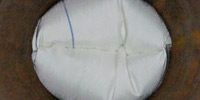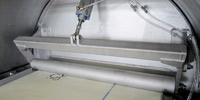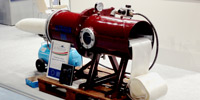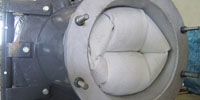The relation between ULTRAGUN and No Dig technologies
The most well-known technologies of the trenchless pipe rehabilitation technologies are the Cured in Place (CIPP) technologies. According to the functional categorization of No Dig technologies CIPP processes belong to the group of liner technologies.
The applied liner is a composite material that consists of resin, a frame structure holding the resin and a coating. The resin used can be polyester, epoxy or vinylester. The frame structure to hold the resin can vary too from needle felt through circularly woven liner to glass fiber and the combination of these materials. The coating of the liners—depending on the transported medium—are made of polyethylene, polypropylene, polyurethane or hyrtel. The coating is responsible for the tightness of the liner. As a consequence of the numerous variations offered by the applied lining elements the highest number of technologies can be found in this category of No Dig technologies.
One of the most important steps of CIPP technologies is the placing of the impregnated liner into the host pipe. There are various possibilities for this. Certain technologies insert the liner by inverting it into the host pipe. For inversion some use water tower and therefore the weight of water to do the inversion. The continuous water flow ensures that the liner arrives to the end of the section of the host pipe. Other technologies simply pull in the impregnated liner into the pipe, then by inflating it with compressed air the liner tightens to the wall of the host pipe.
The technologies applying closed space inversion equipments such as Process-Phoenix were new solutions on the market. According to this technology the impregnated liner is wound up into an inversion drum, the end of the liner is fixed to the inversion ring achieving the needed closed space, which is then put under pressure to invert the liner. The continuous supply of compressed air enables the liner to reach the end of the host pipe.
Even though the technologies mentioned above are considered to be modern solutions they still have some drawbacks, limitations: the water tower, for example, determines the amount of pressure that can be used for inversion, so the water tower limits the inversion pressure (10m high tower equals 1 bar pressure); during pulling in the liner the liner can get damaged and this limits also the length of the liner to be pulled in in one step; the size of the inversion drum defines the length of the impregnated liner to be wound up into the drum, so the length of the section to be relined in one go is also limited.
These drawbacks and limitations lead Agriapipe to develop ULTRAGUN a new inversion equipment that can solve the problems of all of the above mentioned CIPP technologies.




